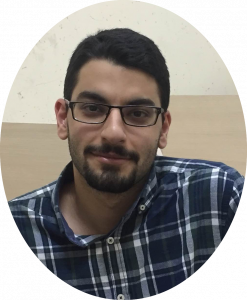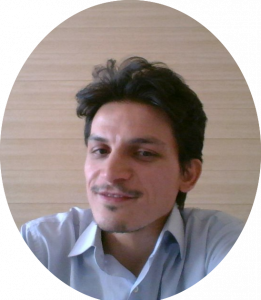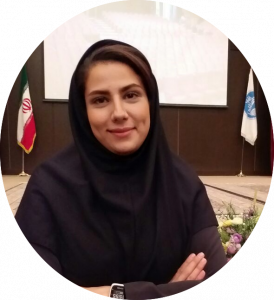
Seyed-Mahdi Khaligh-Razavi Ph.D.
Department of Brain and Cognitive Sciences
Assistant professor
Dr. Khaligh-Razavi is a neuroscientist and entrepreneur; co-founder of Cognetivity ltd, UK; and assistant professor at Royan Institute, Brain and Cognitive Sciences Dept. With a background in computer science and machine learning, he completed his PhD in 2014 at the MRC Cognition and Brain Sciences Unit, Cambridge University, studying visual object recognition in human and machine. After that he became a postdoctoral researcher at the Computer Science and Artificial Intelligence Laboratory (CSAIL) at the Massachusetts Institute of Technology (MIT), studying the human brain using multimodal neuroimaging techniques and computational modelling. During this time, he was also affiliated with Harvard Catalyst (The Harvard University Clinical and Translational Science Centre), where he has worked on medical device development.
Research in our lab is multidisciplinary and translational. It involves developing methods to better study the brain, applying these methods to understand how the brain works, and taking advantage of this knowledge to develop healthcare products where we can have a real impact by improving people’s lives. We study the healthy human brain, and the brain under a few neurological conditions, such as dementia and multiple sclerosis.
We use a variety of tools and techniques in our research:
- Brain imaging:
- fMRI: functional magnetic resonance imaging
- EEG: Electroencephalogram
- MEG: Magnetoencephalography
- Computational models (e.g. convolutional neural nets)
- Machine learning
- Artificial intelligence
 Mehdi Daemi, PhD
Mehdi Daemi, PhD
Postdoctoral researcher
Research: developing virtual reality environments for cognitive rehabilitation
 Hamed Karimi
Hamed Karimi
Master student
Research: brain network analyses of dementia and mild cognitive impairment employing both task-based and resting-state EEG
 Karim Rajaei
Karim Rajaei
PhD student
Research: temporal dynamics of object recognition under occlusion (using MEG)

Maryam Sadeghi
Master Student
Research: Cognitive assessment and rehabilitation in multiple sclerosis
 Haniye Marefat, MD
Haniye Marefat, MD
PhD student
Research: employing multimodal neuroimaging techniques (EEG, fMRI) to characterize spatiotemporal neural dynamics in dementia and mild cognitive impairment
 Mahdiye Khanbagi
Mahdiye Khanbagi
Master student
Research: Cognitive assessment and rehabilitation in multiple sclerosis
Selected publications:
| The neural separation and integration of object and background scene information in natural images
C Mullin, SM Khaligh-Razavi, D Pantazis, A Oliva Journal of Vision 17 (10), 1089-1089 |
2017 |
| Combining human MEG and fMRI data reveals the spatio-temporal dynamics of animacy and real-world object size
SM Khaligh-Razavi, R Cichy, D Pantazis, A Oliva Journal of Vision 17 (10), 574-574 |
2017 |
| Towards building a more complex view of the lateral geniculate nucleus: Recent advances in understanding its role
M Ghodrati, SM Khaligh-Razavi, SR Lehky Progress in neurobiology 156, 214-255 |
2017 |
| Tracking the spatiotemporal neural dynamics of object properties in the human brain
SM Khaligh-Razavi, RM Cichy, D Pantazis, A Oliva Cognitive Computational Neuroscience |
2017 |
| Content-Dependent Fusion: Combining Human MEG and FMRI Data to Reveal Spatiotemporal Dynamics of Animacy and Real-world Object Size
SM Khaligh-Razavi, RM Cichy, D Pantazis, A Oliva AAAI Publications |
2017 |
| Sudden emergence of categoricality at the lateral-occipital stage of ventral visual processing
A Walther, J Diedrichsen, M Mur, SM Khaligh-Razavi, N Kriegeskorte Journal of Vision 16 (12), 407-407 |
2016 |
| Temporal Dynamics of Memorability: An Intrinsic Brain Signal Distinct from Memory
SM Khaligh-Razavi, WA Bainbridge, D Pantazis, A Oliva Journal of Vision 16 (12), 38-38 |
2016 |
| Mixing deep neural network features to explain brain representations
SM Khaligh-Razavi, L Henriksson, K Kay, N Kriegeskorte Journal of Vision 16 (12), 369-369 |
2016 |
| Perceptual similarity of visual patterns predicts dynamic neural activation patterns measured with MEG
SG Wardle, N Kriegeskorte, T Grootswagers, SM Khaligh-Razavi, … Neuroimage 132, 59-70 |
2016 |
| A specialized face-processing model inspired by the organization of monkey face patches explains several face-specific phenomena observed in humans
A Farzmahdi, K Rajaei, M Ghodrati, R Ebrahimpour, SM Khaligh-Razavi Scientific reports 6, 25025 |
2016 |
| Fixed versus mixed RSA: Explaining visual representations by fixed and mixed feature sets from shallow and deep computational models
SM Khaligh-Razavi, L Henriksson, K Kay, N Kriegeskorte Journal of Mathematical Psychology |
2016 |
| From what we perceive to what we remember: Characterizing representational dynamics of visual memorability
SM Khaligh-Razavi, WA Bainbridge, D Pantazis, A Oliva bioRxiv, 049700 |
2016 |
| The effects of recurrent dynamics on ventral-stream representational geometry
SM Khaligh-Razavi, J Carlin, RM Cichy, N Kriegeskorte Journal of vision 15 (12), 1089-1089 |
2015 |
| Visual representations are dominated by intrinsic fluctuations correlated between areas
L Henriksson, SM Khaligh-Razavi, K Kay, N Kriegeskorte NeuroImage 114, 275-286 |
2015 |
| Perceptual similarity of visual patterns predicts the similarity of their dynamic neural activation patterns measured with MEG
SG Wardle, N Kriegeskorte, T Grootswagers, SM Khaligh-Razavi, … arXiv preprint arXiv:1506.02208 |
2015 |
| Representational geometries of object vision in man and machine
SM Khaligh-Razavi University of Cambridge |
2015 |
| System for assessing a mental health disorder
SM KHALIGH-RAZAVI, S HABIBI GB Patent WO2015067945 A1 |
2015 |
| Deep supervised, but not unsupervised, models may explain IT cortical representation
SM Khaligh-Razavi, N Kriegeskorte PLoS computational biology 10 (11), e1003915 |
2014 |
| What is the nature of the decodable neuromagnetic signal? MEG, Models, and Perception.
T Carlson, S Khaligh-Razavi, N Kriegeskorte Journal of Vision 14 (10), 585-585 |
2014 |
| The impact of the lateral geniculate nucleus and corticogeniculate interactions on efficient coding and higher-order visual object processing
S Zabbah, K Rajaei, A Mirzaei, R Ebrahimpour, SM Khaligh-Razavi Vision research 101, 82-93 |
2014 |
| Feedforward object-vision models only tolerate small image variations compared to human
M Ghodrati, A Farzmahdi, K Rajaei, R Ebrahimpour, SM Khaligh-Razavi Frontiers in computational neuroscience 8, 74 |
2014 |
| What you need to know about the state-of-the-art computational models of object-vision: A tour through the models
SM Khaligh-Razavi arXiv preprint arXiv:1407.2776 |
2014 |
| Explaining the hierarchy of visual representational geometries by remixing of features from many computational vision models
SM Khaligh-Razavi, L Henriksson, K Kay, N Kriegeskorte bioRxiv, 009936 |
2014 |
| Intrinsic cortical dynamics dominate population responses to natural images across human visual cortex
L Henriksson, SM Khaligh-Razavi, K Kay, N Kriegeskorte bioRxiv, 008961 |
2014 |
| Population-code representations of natural images across human visual areas
L Henriksson, SM Khaligh-Razavi, N Kriegeskorte Journal of Vision 13 (9), 1035-1035 |
2013 |
| Predicting the Human Reaction Time Based On Natural Image Statistics in a Rapid Categorization Task
A Mirzaei, SM Khaligh-Razavi, M Ghodrati, S Zabbah, R Ebrahimpour Vision Research |
2013 |
| Object-vision models that better explain IT also categorize better, but all models fail at both
SM Khaligh-Razavi, N Kriegeskorte Cosyne Abstracts, Salt Lake City USA |
2013 |
| A stable biologically motivated learning mechanism for visual feature extraction to handle facial categorization
K Rajaei, SM Khaligh-Razavi, M Ghodrati, R Ebrahimpour, MESA Abadi PloS one 7 (6), e38478 |
2012 |
| How can selection of biologically inspired features improve the performance of a robust object recognition model?
M Ghodrati, SM Khaligh-Razavi, R Ebrahimpour, K Rajaei, M Pooyan PloS one 7 (2), e32357 |
2012 |
